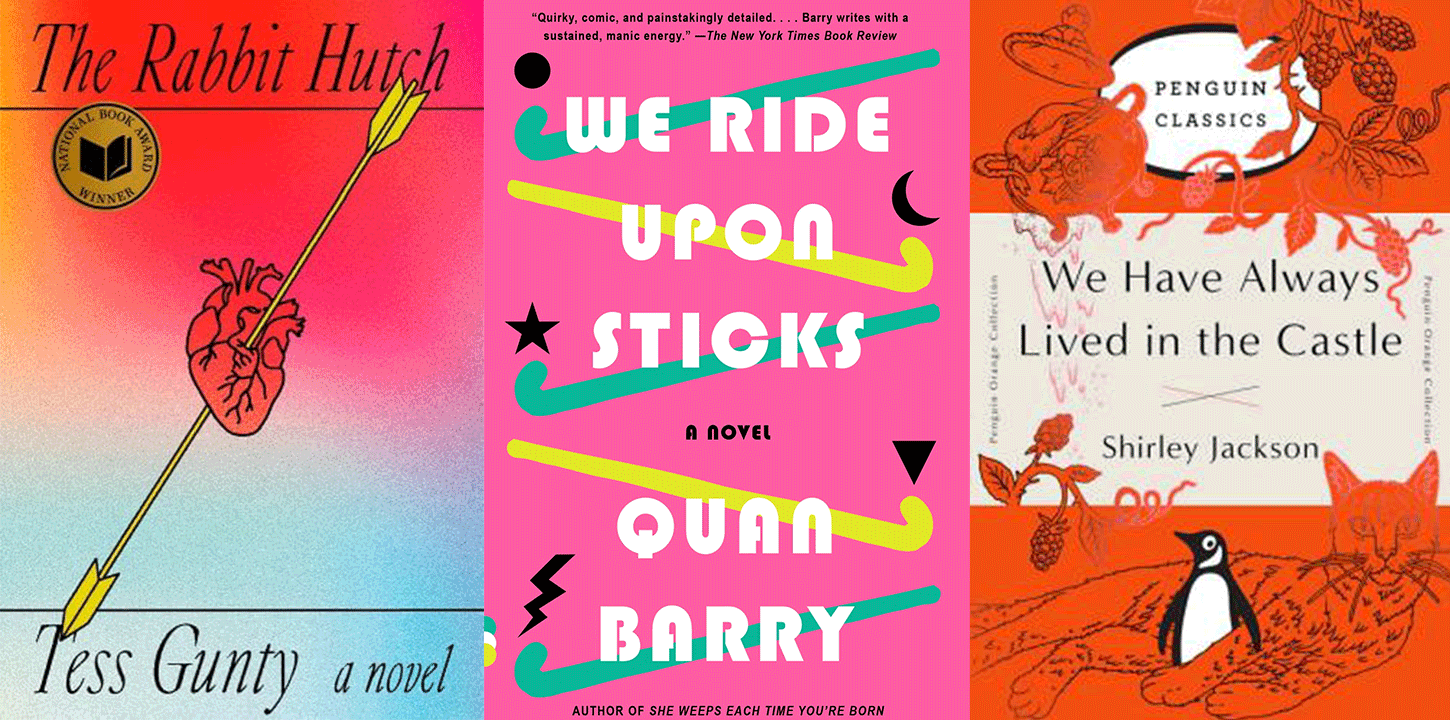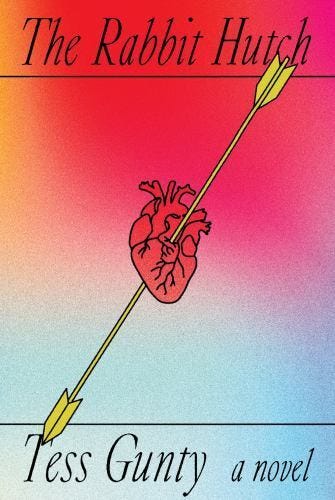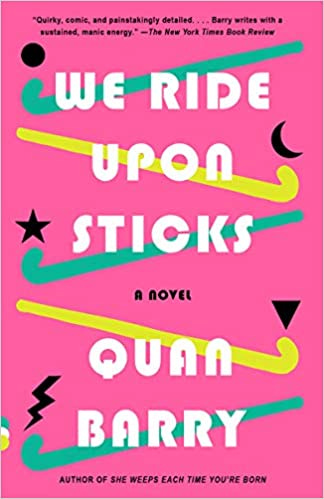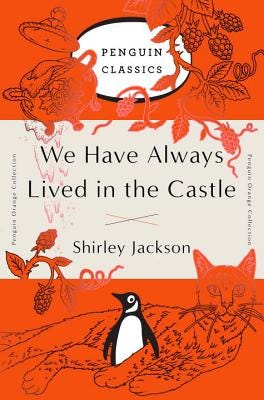Hello there! Good morning and good day and good evening. Let’s not dwell on the fact that it’s been a minute since we last met; instead, let’s dwell on the fact that there are so many good books to read and I read a few of them in January that maybe you, too, would like to read. Good deal! Here they are for your GIF-y viewing pleasure👇👇👇
Maybe it’s the time of year—bare black branches across purple evening skies, scenes that feel more gloaming than sunset—but I’ve been feeling a bit witchy lately.
By witchy, I mean seeing the hazy edges of things. Sometimes, hazy edges are the uncomfortable parts of life that we prefer to avoid—living in absolutes can be the greatest luxury. Other times, hazy edges are the misty, weird, fun places that hold all the good stuff. And if you let yourself get into that place—like, really get in there and stay long enough for some Uber Eats delivery—magical things can happen.
If you’re up for the journey, I think I’ve got just the books for you. They span from 2022 all the way back to 1962. All three of them helped me feel pretty magical last month, and, well, witches love company. So, come and join me before I make some regrettable reference to spells and, specifically, to these books casting them.
But first, a poll!
Ok, now onto the books.
CURRENT:
The Rabbit Hutch, by Tess Gunty
August 2022 (Knopf)
Obviously witchy? No. Magical, with a touch of mysticism and a whole bunch of messy, feral humanity? Oh yes.
The Rabbit Hutch first came across my radar a number of months ago, and I thought, “Maybe I should read that.” Then I saw it again and dropped it in my Bookshop.org cart, then it won the National Book Award, then my friend Ann Marie texted me a passage from it, then my sister got it for me for Christmas, and then Ann Marie also sent it to me. And, well, six signs is all it takes for this gal to pay attention, and I’m so glad I did.
Rabbit Hutch lives in dichotomies, which makes it extremely satisfying to experience: It’s impressively sprawling yet hyperspecific, it’s whimsical and inevitable, it’s long but you’ll want to finish it quickly. Basically, it’s smart, layered, and evocative. Get ready to feel feels.
Most of those feels come courtesy of the main character, Blandine, an otherworldly, brilliant teen who’s recently become obsessed with Catholic female mystics. She lives in the rundown industrial city of Vacca Vale, Indiana, in the rundown apartment complex that gives the novel its name, in a rundown part of town with three teen boys who, like her, recently aged out of the foster care system.
The events of the book take place mostly over one week in July, and are a countdown to a violent culmination that Gunty reveals in the opening lines:
“On a hot night in Apartment C4, Blandine Watkins exits her body. She is only eighteen years old, but she has spent most of her life wishing for this to happen. The agony is sweet, as the mystics promised. It’s like your soul is being stabbed with light, the mystics said, and they were right about that, too. The mystics call this experience the Transverberation of the Heart, or the Seraph’s Assault, but no angel appears to Blandine. There is, however, a bioluminescent man in his fifties, glowing like a firefly. He runs to her and yells.”
The opening section gets better from there—dipping in and out of the other apartments in the building with a god’s eye view—and is among the best I’ve read in recent memory. The rest of the book is fantastic, too (sometimes belabored, but mostly great), and has me rethinking my bias against multi-perspective narratives, which I burned out on in the aughts along with low-rise pants but I guess those are ok in small doses again now, too.
Rabbit Hutch was my first read of 2023, a fact that I’m choosing to see as auspicious. Maybe it can be the same for you.
CONTEMPORARY:
We Ride Upon Sticks, by Quan Barry
2020
Novels like this don’t come along all that often. …which is a sentence that reads like it could appear on a book flap, and probably does somewhere, but, in this case, is also true.
Set in Danvers, Massachusetts, home of the 1692 Salem Witch Trials, this is the witchiest book of the bunch I read in January. It’s also the warmest, fuzziest, funnest one, which I suppose also makes it the least witchy one, depending on how you think of witches.
Here’s the setup: It’s the start of the 1989 season, and the Danvers High field hockey team is tired of losing when they discover a secret. If they pledge an oath to Emilio Estevez by signing their names in a notebook covered by his image, tie a strip of blue sweat sock around their arms, and promise to carry out all manner of devious deeds over the season, they’ll go all the way to states.
We Ride Upon Sticks is a master class in individuals becoming part of a whole. Barry moves back and forth between telling individual characters’ stories in intricate, loving, detail from a first-person plural perspective—and, wow, do I love a “we” book. The technique loosely parallels the dynamics of the deadly Salem Witch Trials themselves—the group-think power of teen girls; the sense of belonging and longing—without being too on-the-nose.
Here, you’re pulled along by the pure warmth of the book—breezy writing that nearly belies deep insights—and the absurdly humorous elements. Big props to Quan’s imagination for creating the all-knowing “Claw”—a proud and powerful structure of 1980s bangs peroxided and Aquanetted into sentience resting atop the co-captain’s head. There are plenty of similar identifying details, seemingly created to help the reader tell apart the book’s 11 main characters, that then become characters in and of themselves and give the book its comic flair.
Oddly, the culmination of the season, the championship game, starts to feel a little besides the point. But as the plot line wanes, the characters and pop culture references remain strong. Special shoutout to using the phrase taking “the Nestea plunge” to describe the act of losing one’s virginity.
OF YORE:
We Have Always Lived in the Castle, by Shirley Jackson
1962
How long into writing a newsletter called Shirley Books would it take me to include a book written by Shirley Jackson? Nearly three years! I’m kind of impressed. But finally, I couldn’t resist.
You may already know the story: Two sisters and their batty uncle living in a manor just outside of town are the sole survivors of a dinnertime poisoning that wiped out the rest of their family years ago. They have no sympathy from the townspeople though, quite the opposite, since the eldest sister, although not convicted, was and is the sole suspect. And so the sisters, Merricat and Constance, stow themselves away amongst the protective walls of their estate, where generations of Blackwoods have always lived, passing their days in a cheerful and off-kilter domestic haze. Until, one day, a stranger comes to town…
So simple! And yet, We Have Always Lived in the Castle is, hands down, one of my favorite books of all time. At under 150 pages, it’s a tiny masterpiece—a true lesson in Vibe Setting. I reread it a few weeks and mapped out exactly what happened in each of the 10 chapters to see if I could figure out its magic. Obviously—because it’s magic—I couldn’t. (I did, however, identify a subtle third timeline I hadn’t noticed before that felt groundbreaking to me at the time—DM me if you want to nerd out.)
If you haven’t read We Have Always Lived in the Castle yet, why not do it this week? Let me tempt you with—once again!—a first paragraph:
My name is Mary Katherine Blackwood. I am eighteen years old, and I live with my sister Constance. I have often thought that with any luck at all I could have been born a werewolf, because the two middle fingers on both my hands are the same length, but I have had to be content with what I had. I dislike washing myself, and dogs, and noise. I like my sister Constance, and Richard Plantagenet, and Amanita phalloides, the death-cap mushroom. Everyone else in my family is dead.
On that note… happy reading!








Superb installment. I want to read them all. More please!